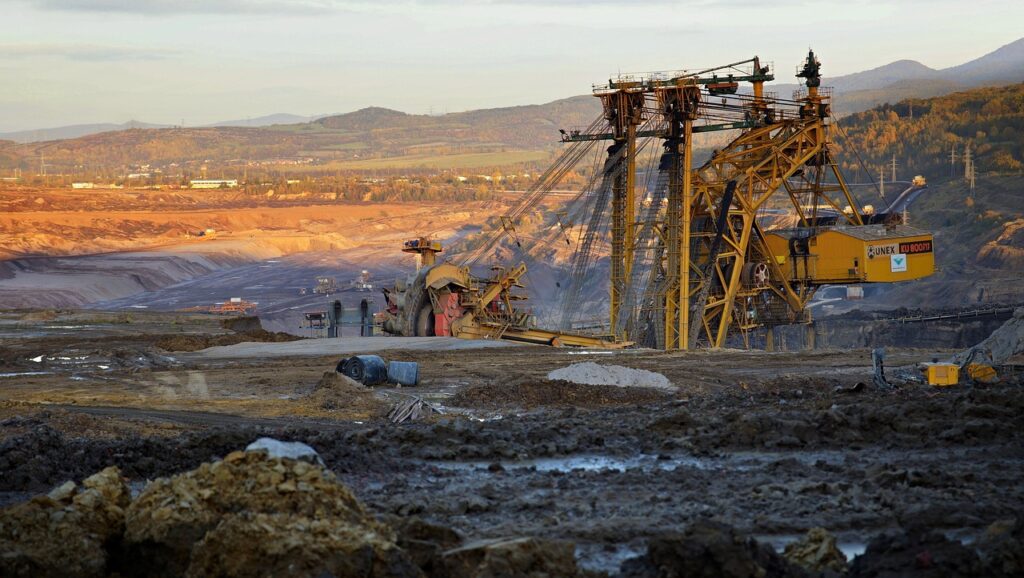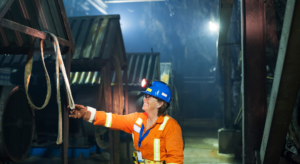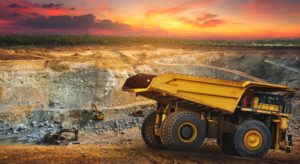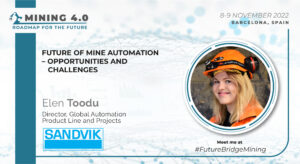Mine productivity and efficiency heavily rely on the optimized execution of core activities. It includes drilling, blasting, loading, and hauling. While practices in these areas have improved incrementally over decades, modern data analytics and physics-based simulation tools open new possibilities for step-change gains.
By leveraging real-time operational data feeds and high-fidelity 3D simulation modeling, mines can transform how they design and conduct blasting and digging operations. This unlocks substantial increases. This is in throughput, resource recovery, and cost savings throughout the mine value chain. So, let us look deeper into mine blasting and digging operations further.
Mine Blasting and Digging: Using Simulation to Optimize Mine Blasting
Well-designed blasting is crucial for maximizing rock fragmentation. This is while minimizing vibration, flyrock, and backbreak. Moreover, this facilitates efficient mine blasting and digging, and material transport.
Traditionally, blast designs were developed based on simple heuristics and lengthy trial-and-error testing. However, modern simulation enables model-based optimization.
Physics-Based Blast Modeling
Specialized software like BlastLogic and GEMS leverages computational fluid dynamics (CFD) and discrete element modeling (DEM). It helps to simulate explosive detonation and also energy transmission through rock in high fidelity.
Engineers can adjust parameters like drill hole layout, explosive type and density, initiation sequence, and timing. It will observe simulated fracture patterns. Furthermore, granular physics models predict fragmentation based on rock properties and explosive energy. As a result, this reveals information not feasible through physical tests alone.
High-performance cloud computing allows for running multiple simulations. This is to identify optimal blast designs. Designs can also be tailored to specific ore body geometry and geotechnical characteristics based on exploration data.
Informing Blast Designs with Real-Time Data
Simulations are further refined by incorporating real-time sensor data from the actual blast site like:
- Downhole geophone monitoring of seismic waves. This is to characterize in-situ rock mass properties like modulus and discontinuities
- Photogrammetry and lidar scans. It is to create accurate high-resolution 3D site models showing geometry and geologic structures
- Hole tracking data from GPS or inertial sensors. It confirms as-drilled accuracy and precise hole locations
Feeding this field data into simulations enables the creation of highly optimized models. They are tailored to the specific geology and drilling execution. Additionally, real-time data closes the loop between plans and execution.
Reducing Ore Loss and Improving Fragmentation
Simulations allow miners to adjust designs to focus explosive energy in the ore body. As a result, it minimizes peripheral damage to walls and ceilings. Furthermore, the particle size distribution and range can also be tuned to meet the requirements of downstream processes. It includes milling and leaching.
Ensuring material transport sizing limits without generating excessive fines relies on efficient fragmentation. Additionally, containing blast energy within mineralized zones minimizes ore loss.
Validating Results
High-speed cameras and drones capture imagery of the actual blast event. It validates and further calibrates simulation models for continuous improvement.
Metrics like fragmentation, throw velocity, muck pile shape, and geotechnical features undergo measurement against simulation predictions. Furthermore, measured differences guide the tuning of models. So, this closed-loop validation tightens the correlation between simulated and actual results, enhancing predictive fidelity.
Mine Blasting and Digging: Optimizing Digging Using Data and Analytics
While drilling and blasting liberate material, optimal digging is critical. It helps in achieving downstream process targets. Moreover, mine blasting and digging data paired with simulation modeling can significantly boost loading efficiency.
Sensor Data for Operational Insights
Modern excavators, shovels, draglines, and surface miners are fitted with sensors providing a wealth of data including:
- Hydraulics sensing bucket and boom forces and stresses during digging
- Onboard weigh scales quantifying payload weights and bucket fill factors
- Cycle timers tracking swing, scoop, hoist, and dump times
- Machine health telemetry like engine and drivetrain diagnostics
This data feeds into analytics platforms, revealing trends impacting productivity. It includes suboptimal fill factors, lags between cycles, forming hotspots, and also impending failures.
Simulation for Efficiency Gains
The collected mine blasting and digging data creates digital twin models of equipment and trajectories. Furthermore, simulations assess pivot points, swing angles, entry/exit angles, and paths. This is to minimize cycle times and improve fill factors.
Equipment capabilities can be modeled based on age and maintenance records. As a result, this allows optimizing motions for efficiency gains of 5-10%. Simulations can also test utilization improvements from repositioning or adding units.
Improving Fragmentation Via Strategy
Certain digging techniques like progressive fragmentation using surface miners or ripping with draglines can obtain better particle size distribution. This is for downstream processes, potentially avoiding secondary crushing and also grinding.
Furthermore, data and simulation help identify ideal digging strategies for enhancing fragmentation. Additionally, sensors verify improvements. This answers the most asked question of what are the blasting operations in mines.
Mine Blasting and Digging: Integrating Blasting and Digging for Multiplier Gains
To achieve major bottom-line impacts, blasting and digging optimizations must tie together:
Joint Simulation Modeling
Mechanical equipment simulations can link physics simulations of explosive detonation and energy transmission. This is to model the full drill-blast-load-haul work cycle.
As a result, this reveals system-level optimization opportunities between blasting and loading. It includes matching fragmentation to shovel capabilities.
Coordinating Parameter Adjustments
Drilling and blasting engineers collaborate with loading teams to coordinate changes. This is to hole patterns, explosive loads, dig depths, etc. based on insights from integrated models.
Models provide a virtual playground for rapidly assessing options before costly field tests. Moreover, integrated simulation facilitates holistic planning.
Monitoring Impacts
High-speed photography, drones, and sensors monitor key metrics. This includes fragment size distribution, digging force, fill factors, and cycle times to validate improvements.
Models predict benchmarks, and performance assesses them. Additionally, measured data re-validates and updates the models.
Continuously Improving Models
Measurement data is fed back into the simulation models. It drives continuous enhancement of their accuracy and predictive capability.
This closed-loop integration of data and simulation between blasting and digging unlocks multiplier productivity and also efficiency gains for mining operations.
Mine Blasting and Digging: Blasting and Digging Optimization in Action
Leading mining companies are realizing major benefits from implementing data-driven blasting and digging enhancements:
Roy Hill Boosts Excavator Productivity through Digging Analytics
At their Australian iron ore mine, Roy Hill monitors excavator hydraulic and telemetry sensor data on an analytics platform. It provides insights to optimize motion, speed, and trajectory. Moreover, they have increased payload sizes and fill factors by smoothing out digging paths.
Gold Fields Skips Primary Crushing via Advanced Blasting
At their St Ives gold mine in Western Australia, Gold Fields employed optimized blasting. It is based on high-resolution site data and simulation. It helps to achieve smaller, more consistent fragments that could skip primary crushing. As a result, this reduced energy needs by 8% while increasing mill recovery – a huge gain.
Mine Blasting and Digging: Accelerating Performance with Next-Gen Technology
To stay competitive, mines must leverage leading-edge solutions across drilling, blasting, digging, and hauling:
- High-precision GPS or robotic-guided drilling optimizes hole placement accuracy
- Automated explosives loading improves repeatability and safety
- Autonomous electric excavators, shovels, and loaders boost productivity
- Simulation-based dispatch algorithms optimize fleet movements
- Augmented interfaces enhance operator situational awareness
Adopting these and other innovations will drive the next leap in mining operations productivity, efficiency, and sustainability.
Join Us at Mining 4.0 Americas to Explore these Topics
The 5th Mining 4.0: North America 2024 on April 10-11, 2024 in Toronto, Canada connects you with hundreds of industry colleagues and technology experts driving mine modernization.
Discover what is the process of drilling and blasting mining, operation optimization, technology-driven sustainability, and more. Moreover, get leading-edge solutions for drilling, mine blasting and digging, loading, hauling, and more. Moreover, hear real-world insights from miners spearheading change. Additionally, network with innovative solution providers and peers leading the adoption of next-generation mining techniques. So, register now to secure your place at this premier industry event.





